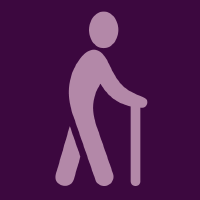Topic Menu
► Topic MenuTopic Editors



Mental Health Issues and Quality of Life in Older Individuals
Topic Information
Dear Colleagues,
There are numerous biological, psychological, and social factors that have more or less prominent impacts on the mental health of older adults. Apart from components derived from the normal processes of aging or the co-occurrence of various medical diseases, events such as the death of a loved one, retirement, or disability contribute significantly to a variety of mental or emotional problems at this stage of the life cycle. The most frequent problems affect the neurocognitive, affective, and sleep functions, which can lead to a reduction in the quality of life. Major neurocognitive disorders reduce a patient's overall performance and thus create demanding needs for dependency and a higher level of frailty. Affective disorders can be accentuated by a lack of family support and a marked decrease in social interactions, which can lead to significant isolation with resulting suicidal behavior. The increased frequency of sleep disorders such as insomnia, daytime sleepiness, and specific disorders such as obstructive apnea can signficiantly further alter the quality of life of this population. The complexity of these disorders needs the expertise of a multidisciplinary team to provide the best healthcare for these patients. This Special Issue wishes to shed new light on this exciting and insightful field of research from a multidisciplinary perspective. This Special Issue, "Mental health issues and quality of life in older individuals", reflects the interplay between neurological and psychiatric sciences, with other health sciences at the leading edge of this growing research field, which intensively suggest new opportunities for improving the care of older individuals or preventing adverse outcomes. In this Special Issue, the readership will find relevant research carried out by several healthcare professionals and researchers with extensive knowledge on clinical settings, and it is intended to address new issues of interest of specific importance to research and clinical practice.
Prof. Dr. Omar Cauli
Dr. Francisco Miguel Martínez-Arnau
Dr. Cristina Buigues
Topic Editors
Keywords
- cognitive function
- sleep
- depression
- quality of life
- frailty
- psychiatric disorders
- gerontology
- social factors
- comorbidities
- biomarkers
- nursing
- gender
Participating Journals
| Journal Name | Impact Factor | CiteScore | Launched Year | First Decision (median) | APC |
|---|---|---|---|---|---|

Diseases
|
3.7 | - | 2013 | 18.8 Days | CHF 1800 |

Geriatrics
|
2.3 | 2.7 | 2016 | 22.4 Days | CHF 1800 |

Healthcare
|
2.8 | 2.7 | 2013 | 19.5 Days | CHF 2700 |

Life
|
3.2 | 2.7 | 2011 | 17.5 Days | CHF 2600 |

Brain Sciences
|
3.3 | 3.9 | 2011 | 15.6 Days | CHF 2200 |

MDPI Topics is cooperating with Preprints.org and has built a direct connection between MDPI journals and Preprints.org. Authors are encouraged to enjoy the benefits by posting a preprint at Preprints.org prior to publication:
- Immediately share your ideas ahead of publication and establish your research priority;
- Protect your idea from being stolen with this time-stamped preprint article;
- Enhance the exposure and impact of your research;
- Receive feedback from your peers in advance;
- Have it indexed in Web of Science (Preprint Citation Index), Google Scholar, Crossref, SHARE, PrePubMed, Scilit and Europe PMC.

